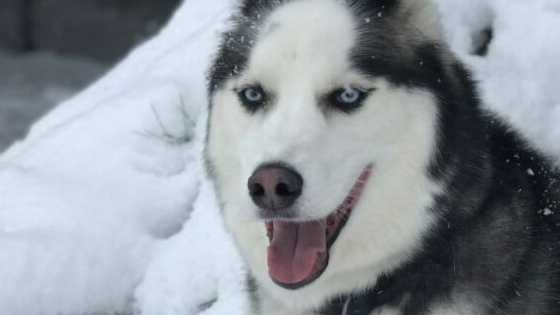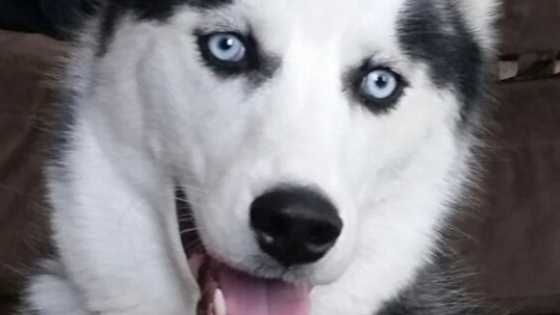
What Is Snow or Winter Nose In Dogs?
Snow nose or winter nose is when a dog’s nose temporarily turns pink during the winter months. Snow nose is a common condition occurring during the shorter and colder months when the dark pigment of the nose fades to a pinkish color. Often it’s just the center of the nose giving him a pink stripe.
Why Do Dogs Get Snow Nose?
It is unclear why dogs get snow nose. It could be cold temperatures, short daylight hours, or partly genetics. Dogs in warm, even tropical climates may also lose pigmentation in their noses.
Halo’s first winter, I noticed his nose turning pink and wondered what was wrong with his nose. Upon checking with his vet and doing research, I was relieved that it’s a normal temporary condition.
Which Breeds Get Snow Nose?
A dog’s nose color depends on genetics. Noses can be black, brown, liver, pink (Dudley nose) or the same color as their coat.
Dogs that are prone to snow nose are, but not limited to:
- Siberian Husky
- German Shepard
- Bernese Mountain Dog
- Golden Retriever
- Labrador Retriever
Should Pet Parents Be Concerned?
It is perfectly normal for these dogs to have snow nose during the winter months and shouldn’t be a concern. However, if the nose is dry and cracking, you should consult your veterinarian.
There could be an underlying health concern. Things to also watch for are, scabs, rough texture, and bleeding. Wounds that don’t appear to be healing or other symptoms like vomiting or diarrhea. Please consult your veterinarian.
What Should I Do About It?
The lighter pigment during the winter months leaves your dog susceptible to sunburn. An all-natural product like Snout Soother can help when you outside for long periods.

Will It Return To Normal Color?
Yes. As the days grow longer and warmer, the pigment should return to normal. When a dog ages, it may stay a faded color.
As A Dog Ages
Tyrosinase is an enzyme responsible for pigment. As a dog ages, the enzyme diminishes, and the nose may remain the faded color year-round.
I’ve noticed that Halo’s nose isn’t as black as it was when he was younger. Definitely darker than in the winter months, however.
Vitiligo In Dogs
Vitiligo is where the dog loses pigmentation, and the hair turns white. It is not harmful to your dog. It is a rear genetic condition.
Breeds that are more likely to be affected:
- Rottweiler
- Siberian Husky
- Dachshunds
- Golden Retriever
- Labrador Retriever
- German Shepard
- Doberman Pinscher
- German Shorthair Pointer
Focal Vitiligo is the temporary loss of pigment in the nose known as snow or winter nose.
Generalized Vitiligo is loss of pigment on multiple patches across the body, often affecting the face.
Vitiligo isn’t harmful or painful, but of course, talk to your veterinarian to rule out an underlying health issue.
Plastic Bowls
Contact dermatitis will also change the color of the nose. Consider switching to stainless steel or glass bowls. Many dogs are sensitive to plastic food dishes. Their noses can turn pink and lips become inflamed.
Halo has Pyrex pie plates for his meals and stainless steel water bowls. I love the pie plates. They’re dishwasher safe, stack nicely, and very durable. It’s the little things that make life easier.
Conclusion
Snow Nose is typical in Siberian Huskies and no need for concern. Protect your pup’s nose from sunburn and have fun playing with you snowdog this winter.
Disclaimer: This article is for educational purposes only. Always speak to your veterinarian about all concerns you may have with your dog.
Check out Dangerous Foods for Huskies
